Chiropractic Adjustments for Better Posture | Chiropractor for Posture in Boulder, CO
Hey guys, Dr. Duff here and Dr. Emery and today we’re going to talk about what are some of the adjustments or treatments that we can use to help posture. So we’re here in the adjust auditorium area where all the patients get adjusted. And I’m going to give you an example of how we can help change posture with some of the hands on adjustments using the tables, using some of our adjusting instruments to help change posture.
First We Do a Posture Assessment to Determine Your Postural Distortion
Okay, so when a patient comes in, the first thing that I’ll do is assess their posture. Depending on what they present with, that’ll dictate which adjustments that I do. Today, I’m going to talk through a couple of examples of some of the more common postural distortions that I see in society today, and some of the more common adjustments that I’ll do to help with those. So the first one that I’m going to focus on today, here with Dr. Emery is one for forward head posture, one of the most common postural distortions I see in society today due to what we do as a society constantly looking down. All right, so on this one, she’s actually going to be on the table lying face down all the way up top. And a great adjustment that we use, these tables have dropped mechanisms, so they crank up and will help get the head back into a posterior translation position. And what I can do at the same time as provide some pressure into the lower neck area, and as I apply enough pressure, the drop table actually come down and drop. And what happens is at that point, not only my stressing the neck into this position, but also that drop will help send signals to help us change your posture faster. I usually do a series have about four or five of these to really get those soft tissues into a good position. And that’s really going to help her get the head back into where we want it to be.
Adjustments We Do for Forward Head Posture
Another one that I do for for head posture is in a seated position Dr. Emery come on up facing the camera. In a seated position, I’ll use our adjusting instruments, this is called an Arthrostim. It’s kind of like a Thumper or theragun If you’ve ever seen one of those before, she’s going to help me by activating some of the muscles that help promote getting your head back. So Dr. Emery, I’ll have you tilt your head up to about 45 degrees. And then I’m going to press against the back of her head and Dr. Emery I want you to match it. Now as she’s doing this, I’m riding the Thumper or Arthrostim and up and down certain areas for spine, activating specific receptors to help us change her posture long term. Most of the time, it feels pretty good. It’s very light, it’s kind of like a massaging type of feeling. And we do that for about 10 seconds. 10 seconds will help us reposition the body will start to pick up on it. And that’ll help us make an according change. Alright, awesome.
Hip and Pelvis Postural Distortion Treatment
Now, some of the more common postural distortions we also see are in the hip, hip and pelvis area, commonly with anterior pelvic carriage which can create discrepancies in the rotations of our hips. So we’re going to focus on getting the hips back a little bit, opening up those lumbar joints. And for this one, I’m going to actually use one of my blocks. So the block is going to help translate her pelvis in a way that will help open up those low back joints and help take pressure off of the mid to low back area. Go ahead my face down for me. Now, if you wouldn’t mind documentary, lift your hips up completely. For me, I’m gonna put a block underneath here all the way through, and it’s going to be below the belt line, it’s going to help bring the pelvis up and bring the rest of her upper body down, which is the opposite of this posture. Instead, it’s more so like this. Now, what I’ll do here is a couple of drops into the lumbar spine pops up, I’m gonna put a little pressure down, dropping it down right here, helping emphasize some of these joints to move into a different position. So I do again, about three or four of these drops. And some of them are a little bit uncomfortable at first because we’re at a completely different position. But many of my patients can tolerate these even my patients in their 60s 70s and 80s who have things like canes and pacemakers in their heart.
Hands-on Chiropractic Adjustments We Do For Posture Correction
Other adjustments I’ll do is an actually hands on adjustment into the mid back area. So in here I’m looking for these areas of misalignment as well as the postural things to help kind of kill two birds with one stone. So right and then here in this mid back area, Dr. Emery take a nice deep breath in and then let that out sink down into the table. And I love to do these adjustments while the blocks are here too, because it helps further set that adjustment to its correct position. I can also run my adjusting instrument up and down her spine at the same time. Again, removing some of the soft tissue irritations, creating some of the vibration that’s going to help decrease the pain and give us the best chance at actually helping her posture pressure.
Okay so these are some of the things that we use to help posture on the tables. And it always depends on where these misalignments are, there are so many different things that we can have, which is why we need things like blocks and drops in different setups so that we can help you get the best results that you need, depending on what your postural distortions are.

